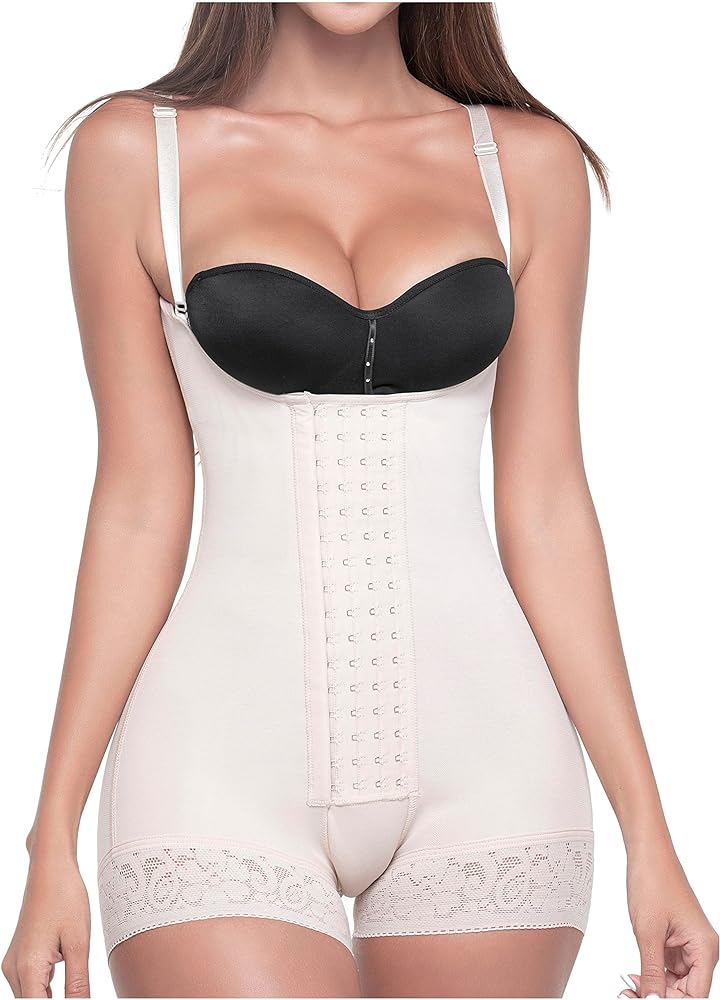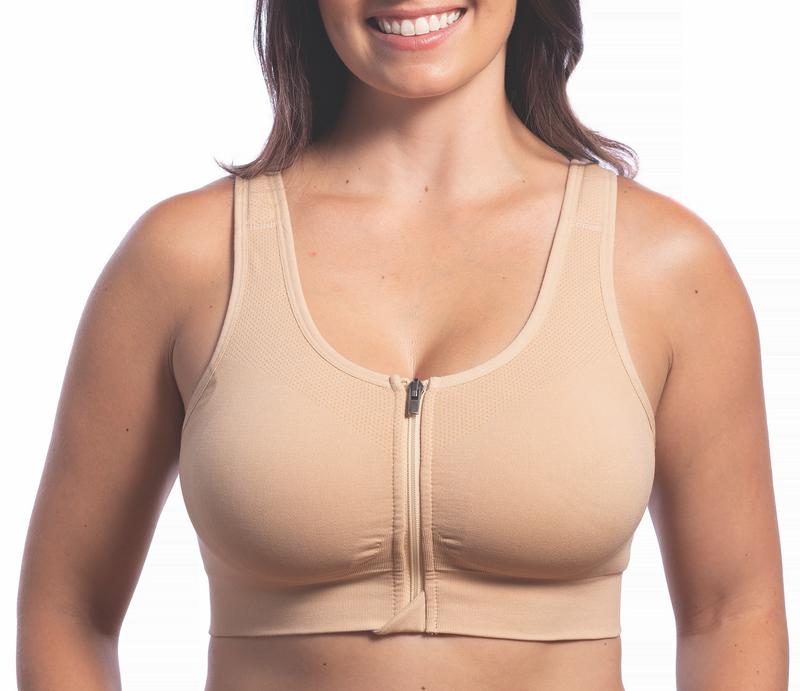Compression garments have surged in popularity, hailed for their benefits in sports performance and medical recovery alike. These specialized pieces of clothing apply gentle pressure to specific body parts, aiding in circulation improvement and muscle support. Athletes often wear them to hasten recovery post-exercise, while healthcare providers recommend them for patients managing swelling or improving blood flow after surgery. Beyond the realm of physical health, compression garments also offer cosmetic benefits by smoothing body contours for a sleeker appearance. This dual functionality makes compression garments a versatile tool in both wellness and fitness arsenals.
Understanding Compression Garments for Medical Therapy
Blood Circulation
Compression garments play a crucial role in enhancing blood circulation. They apply gentle pressure to the veins, promoting faster movement of blood back to the heart. This process is essential, especially for people who stand or sit for long periods.
Wearing these garments can significantly reduce the risk of developing circulatory issues. Improved circulation also means more oxygen and nutrients are delivered throughout the body, aiding in overall health and recovery from exercises or injuries.
Swelling Reduction
Another key benefit of compression garments is their ability to minimize swelling. They achieve this by preventing fluid build-up in tissues, which often occurs after surgery or due to certain medical conditions.
For individuals experiencing edema or lymphedema, compression garments offer relief and comfort. By keeping swelling under control, they help speed up healing and reduce discomfort during recovery phases.
Prevention of Blood Clots
Compression garments are highly recommended for preventing deep vein thrombosis (DVT) and other forms of blood clots. The pressure they exert helps keep blood flowing smoothly, reducing the chances that clots will form.
They are particularly beneficial for patients post-surgery or those with limited mobility. For travelers on long flights where movement is restricted, wearing compression socks can be a simple yet effective preventive measure against DVT.
-
Key Benefits:
-
Improves blood circulation.
-
Reduces swelling.
-
Prevents formation of blood clots.
The Role of Compression Garments in Lymphatic Disorders
Managing Lymphedema
Compression garments are crucial for individuals with lymphatic disorders. They help by facilitating the drainage of lymph fluid. This is essential to prevent the buildup of this fluid in tissues, which can lead to swelling and discomfort.
These garments apply gentle pressure on affected areas. This encourages the movement of lymph fluids back into circulation. Many patients notice a significant reduction in swelling after regular use.
Preventing Fluid Accumulation
The prevention of fluid accumulation is another key benefit. Without proper management, excess fluid can cause severe swelling and pain. Compression garments play a vital role here.
By wearing these garments, patients can keep their limbs at a normal size. This not only brings physical relief but also helps them maintain an active lifestyle.
Reducing Infection Risk
Lastly, compression garments reduce the risk of infection in affected limbs. Swollen tissues are more prone to cuts and infections due to stretched skin.
Wearing these garments protects the skin by keeping it tight and less vulnerable to injuries. As such, they serve as an important tool in maintaining overall limb health for those with lymphatic disorders.
Utilizing Compression Garments for Post-Surgical Support
Healing Acceleration
Compression garments play a crucial role in post-surgical recovery. They help reduce swelling and stabilize the area. This is key for healing.
Patients often notice a difference when using these garments consistently. The pressure helps control fluid buildup, leading to faster recovery times.
Scarring Minimization
Another benefit of compression garments is their ability to minimize scarring. Controlled pressure ensures that the skin heals neatly.
For many patients, this means gaining back confidence sooner. It’s not just about physical health but also how one feels about their appearance during recovery.
Support Provision
Post-surgery, some areas may be weakened or vulnerable. Compression garments provide necessary support here.
This prevents strain on sensitive areas, allowing patients to move more freely without fear of injury. It’s an essential part of regaining normal function day by day.
Types of Elastomeric Fibers in Compression Garments
Spandex Benefits
Spandex stands out for its exceptional stretchability and durability. This fiber allows compression garments to fit closely to the body, providing effective support. It’s especially useful in post-surgical garments, aiding in recovery by ensuring consistent pressure on targeted areas.
The strength of spandex ensures that these garments can withstand multiple washes without losing their shape. This makes them a reliable choice for long-term use.
Microfiber Features
Microfibers are celebrated for their breathability and ability to wick moisture away from the skin. These fibers are ultra-fine, making them soft against the skin while allowing air to circulate freely. This is crucial for maintaining comfort during recovery periods when garments are worn continuously.

Microfiber’s moisture-wicking properties keep the skin dry, reducing the risk of irritation or infection at surgical sites.
Nylon Blends
Nylon blends contribute significantly to both fit and comfort in compression garments. They offer a balance between flexibility and firmness, ensuring the garment molds perfectly to the body without constricting movement too much.
These blends also enhance durability and maintain garment integrity over time. Their smooth texture minimizes friction against sensitive post-surgical skin, promoting healing while maximizing user comfort.
Design and Evaluation System for Effective Compression Wear
Measurement Techniques
Experts use precise measurement techniques to ensure compression garments deliver the right level of compression. They measure body parts accurately. This ensures each garment fits perfectly.
The right fit is crucial for effectiveness. It also maximizes comfort and support. Without accurate measurements, a garment might not provide the intended benefits.
Wear Trials
Wear trials are essential for assessing comfort, fit, and functionality. During these trials, users wear the garments under various conditions. They then provide feedback on how comfortable they feel.
Feedback covers many aspects:
-
How well the garment stays in place.
-
If it allows freedom of movement.
-
Its overall comfort throughout different activities.
This information is vital for improving product design.
Continuous Feedback Loop
A continuous feedback loop from users helps perfect compression wear designs over time. Users’ experiences inform designers about what works and what doesn’t.
Key improvements often include:
-
Adjusting compression levels.
-
Enhancing material breathability.
-
Improving seam placements to avoid irritation.
The Science Behind Compression Garment Design
Graduated Compression
Graduated compression technology is a cornerstone in the design of compression garments. This method applies varying levels of pressure to specific body parts. It ensures that the highest amount of pressure is at the extremities and decreases as it moves up the body.
This approach helps in enhancing blood circulation. It’s particularly beneficial for athletes and individuals with circulatory issues. By targeting areas like legs or arms, these garments can reduce swelling and fatigue.
Material Composition
The choice of material plays a crucial role in how effective a compression garment can be. Materials need to have the right balance between elasticity and strength to provide adequate compression without causing discomfort.
Fabrics are often a blend containing elements like spandex for stretchability and nylon for durability. This combination allows for optimal performance while maintaining breathability and moisture-wicking properties.
Ergonomic Designs
Ergonomic designs ensure that wearers will continue using their compression garments over time, which is vital for long-term benefits. These designs consider human anatomy and movement patterns to offer comfort alongside effectiveness.
Innovations in this area include strategically placed seams, zoned compression areas, and adjustable features. Such details make wearing these garments daily more appealing by reducing potential irritants like chafing or pinching.
Choosing the Right Type of Compression Garment
Compression Levels
The first step in choosing a compression garment is understanding the level of compression you need. There are three main levels: mild, moderate, and high. Each serves different needs.
Mild compression helps with minor swelling and fatigue. It’s good for daily wear. Moderate compression is better for more significant swelling or varicose veins. High compression is used for severe lymphedema or after surgery. It’s crucial to consult a healthcare provider to determine the right level.
Garment Style
Next, consider the style of the garment needed for targeted support. Options include sleeves, stockings, and full-body suits.
Sleeves are great for arm issues while stockings help with leg problems like varicose veins. Full-body suits offer overall support but might be less comfortable for everyday use.
Proper Fit
Proper fit ensures you get the therapeutic benefits of your garment.
A well-fitted garment should feel snug but not too tight. It should cover the area needing support without bunching up or sliding down.
To ensure a good fit, measurements should be taken by a professional whenever possible.
The Role of Compression Garments in Sports Performance
Improved Circulation
Compression garments enhance blood flow to muscles. This is crucial for athletes. Better circulation means more oxygen reaches the muscles. Oxygen is vital for energy and performance.
Wearing compression gear can lead to significant improvements during exercise. Athletes often report feeling stronger and more capable. This isn’t just a placebo effect. Studies support these claims.
Reduced Fatigue
Muscle fatigue is a major challenge for athletes. It can hinder performance during critical moments in sports. Compression garments help by reducing muscle vibration during activities.
Less vibration means less fatigue over time. Athletes find they can train longer and harder with reduced soreness afterwards.
Faster Recovery
Recovery between training sessions is key for any athlete’s success. Compression garments speed up this process significantly. They do so by aiding in the removal of lactic acid from muscles post-exercise.
Athletes wearing compression gear report quicker recovery times. This allows them to return to training sooner than without such aids.
Closing Thoughts
The exploration of compression garments across medical therapy, lymphatic disorders, post-surgical support, and sports performance underscores their significant role in enhancing health and physical activity. By delving into the types of elastomeric fibers, design considerations, and the science underpinning these garments, we gain a comprehensive understanding of their functionality and benefits. Choosing the right type of compression garment is crucial for maximizing its effectiveness, whether for medical purposes or athletic improvement. The discussion highlights the importance of informed selection based on individual needs and the potential impact on recovery and performance.
Encouraging further research and consultation with healthcare professionals or sports experts can empower individuals to make educated decisions about using compression garments. As technology and design evolve, staying informed about advancements in this field will continue to benefit users in diverse ways. Explore your options and consider how compression garments might enhance your health regime or athletic performance today.
Frequently Asked Questions
What are compression garments used for in medical therapy?
Compression garments are utilized to improve blood circulation, reduce swelling, and speed up recovery from various medical conditions, including lymphatic disorders and post-surgical healing.
How do compression garments aid in the management of lymphatic disorders?
They help manage lymphatic disorders by applying consistent pressure to affected areas, facilitating the flow of lymph fluids away from swollen regions to reduce edema and discomfort.
What role do elastomeric fibers play in compression garments?
Elastomeric fibers provide the necessary stretchability and compressive force in compression garments, ensuring they offer effective support while being comfortable for prolonged wear.
How is the effectiveness of a compression garment evaluated?
The effectiveness is typically evaluated through clinical assessments that measure improvements in blood flow, reduction of swelling, patient comfort levels, and overall mobility enhancement.
Why is choosing the right type of compression garment important?
Selecting an appropriate garment ensures optimal therapeutic benefits. The right fit can significantly impact its efficacy in managing specific health issues or enhancing sports performance without causing discomfort or restricting movement.
Can wearing compression garments improve sports performance?
Yes. Compression garments can enhance athletic performance by improving blood circulation, reducing muscle oscillation during activities, and decreasing recovery times between workouts.



